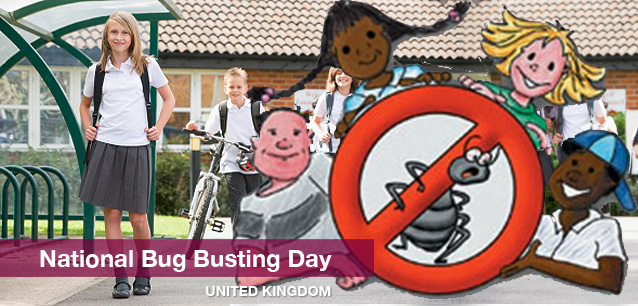 AD
AD
Today is: December 28
Scroll to explore events active on this date.
Additional Events on LEEP
LEEP INK FEATURES

August? Absolutely!
In August, we live through the Dog Days of Summer. It's hot and often humid, and those who can leave for better climates do. Down south, winter is in full force. August is also known as "the ...

In The Heat of July: July 2025 Events
Is it hot enough (or cold enough if you're below the equator) for you yet? There is actually a day for that! Like every month, I pick a diverse collection of events you may or may not know about. This ...

May Blooms: Events in May 2025
Along with October, May is one of the most densely packed months of the year. It's before the summer humidity and the last whole month of the school year. The weather is warming in t...
About National Bug Busting Day
Environment Space & The Outdoors , United Kingdom & Ireland
Ends: Oct 31, 2024
DESCRIPTION:
National Bug Busting Day occurs three times per year in the United Kingdom: January, June, and October. It is a concentrated effort to stem the tide of lice infections within schools and the general population. Through the registered charity Community Hygiene Concern, the government teaches parents, educators, and pharmacists how to detect and stop the spread of head lice and provides affordable Bug Busting kits.
Community Bug Busting Days began with the late Dr. RJ Donaldson, affectionately known as Paddy. Dr. Donaldson demonstrated in the 1970s that an intensive detection/treatment campaign could dramatically cut the prevalence of head lice. He was the tireless mentor of the Bug Busting Days organized by Community Hygiene Concern, taking a personal interest from 1986 in our development of wet detection methods in preference to less effective dry or damp methods. Today Bug Busting Days are organized in partnership with the Department of Health.
Lice are a big problem in schools. Once they infect an individual, these parasites can be very difficult to exterminate. The following are some facts:
The eggs of head lice usually take seven to ten days to hatch.
Combing dry or damp hair with a fine-tooth comb is not a reliable way to detect lice.
Metal combs are not suitable for louse detection because these combs are primarily nit combs. Lice caught between the tightly spaced teeth remain unnoticed against the metal and can be combed back into the hair unharmed at subsequent strokes.
No studies prove that wet head lice grasp hairs more tightly, thus hampering their removal with a fine-tooth comb.
You do not need head-to-head contact to catch lice; proximity will do it.
Head lice are a community problem. Approximately 20% of head lice cases occur in people over 16 or under four years old.
VIDEOS
Where would you like to go now?
 AD
AD




/footer-logo.svg)
